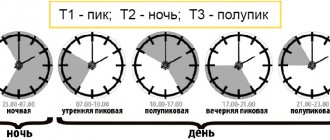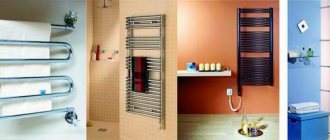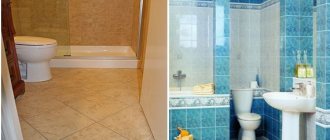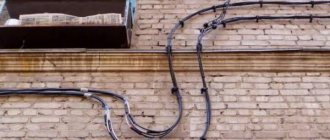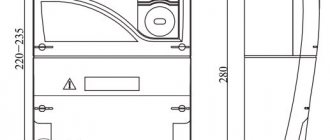What is a multi-tariff accounting system?
The amount of energy consumed depends on the time of day, which forces energy specialists to divide the day into several zones:
- NIGHT. Starts at 23.00 and ends at 7.00 am. Its peculiarity lies in the most favorable tariff.
- MORNING (PEAK). This zone starts at 7.00 and continues until 9.00. After rest, people wake up and get ready to go to work. They include many electrical appliances, which leads to a sharp increase in load. In addition, during this period the working day begins in companies and enterprises.
- DAY (HALF PEAK). This period covers a larger range from 10.00 am to 17.00 pm. The “lion’s” portion of people are at work, so the workload is approximately equalized. The largest consumption remains with companies, firms and organizations.
- EVENING (PEAK). In the period from 17.00 to 21.00, the second phase of the highest load takes place, when people return from work and turn on various sources of load, namely washing machines, electric kettles, air conditioners, PCs and other household appliances.
- EVENING (HALF PEAK). This zone is limited to two hours from 21.00 to 23.00. The period is characterized by a gradual decrease in load as people go to bed.
A multi-tariff meter is a special device for metering electricity that controls each of the mentioned periods. Thanks to this mode, the network is unloaded during peak hours due to the transfer of part of the power to the night or weekends.
The use of differential metering allows you to reduce costs, which is especially important for enterprises with a round-the-clock operating cycle or with short interruptions in the work of consumers.
Buying a multi-tariff meter is considered a profitable investment for manufacturers of various products. With this approach, it is possible to reduce the cost of goods and thereby increase profits.
To effectively use such devices, it is important to understand the intricacies of the operation of such meters and determine the relevance of their use.
As for apartments and houses, there are enough metering devices designed to work with two tariffs.
Multi-tariff accounting system
Electricity consumption varies throughout the day. In the energy sector, a conditional division of day and night into 5 zones is accepted:
- Night 23.00-7.00. Electricity consumption at this time is minimal, since most people are sleeping.
- Morning peak 7.00-9.00. People are starting to wake up and get ready for the work day. Many electrical appliances are used in everyday life, and machines are installed in enterprises.
- Daytime half-peak 10.00-17.00. Electricity consumption is reduced as the household load is reduced to a minimum. However, enterprises continue to operate and consume electricity.
- Evening peak 17.00-21.00. The “peak” occurs not only in transport supplies, but also in electricity consumption. Energy-intensive household appliances (boilers, electric stoves, dishwashers and washing machines) begin to work. Lights are turned on outside, heating and air conditioning devices, televisions, computers, etc. are turned on in houses.
- Evening half-peak 21.00-23.00. The overall workload decreases as many household chores are completed and the population gradually goes to bed.
Spikes in consumption negatively impact transmission lines and power plants. Electricity is used irrationally, and transformer and generating equipment quickly wears out. When the power of thermal power plants decreases, the efficiency decreases, which leads to excessive fuel consumption and increased emissions into the atmosphere. For nuclear power plants, this is fraught with increased danger and large losses.
To maximize compensation for differences and prevent unpleasant consequences, we developed a differentiated tariff system. It should motivate people to reduce energy consumption during peak hours and shift household chores to the night. A similar energy consumption policy has been introduced in most regions of the Russian Federation, but different tariffs are used. Not everywhere the night rate is much lower than the day rate.
Let's give an example of tariffs in St. Petersburg. For 1 kW of electricity (for houses with electric stoves) from January 1, 2017.
In this case, the one-rate tariff is 2.88 rubles. As you can see, the differences between the peak period and the night period are excellent by 2 times. With a more detailed calculation on a computer or using a calculator, significant savings will be visible.
The housewife can always program the washing machine for night washing using a delayed start. The same should be done with the dishwasher. It is also more economical to heat water in a powerful boiler at night, providing households with a daily supply of hot water. Modern kitchen appliances can prepare food before 7 am. Intelligent heating and air conditioning systems allow you to use energy efficiently.
Some companies encourage increased energy consumption on weekends. Load leveling occurs by reducing the load from “home” consumption on weekdays.
As you can see, two- and multi-tariff systems open up many opportunities for financial savings. But an initial investment is required - buy an appropriate meter.
What is a two-tariff meter, how it works
The essence of a two-tariff meter is simple. Unlike a standard meter, it controls consumption in two zones - daytime (from 7.00 to 23.00) and night (from 23.00 to 7.00), which allows you to split the payment for electricity.
In the first case, the standard tariff applies, and at night it is significantly lower. If you plan to use powerful consumers at night, using a two-tariff meter is the way to save money.
The relevance of the transition to such devices is easy to explain. It is important for power plants and substations that the load on equipment is uniform throughout the day. In practice, it is higher in the morning, afternoon and evening hours than at night. As a result, equipment operates at its limit and breaks down faster.
The widespread use of two-tariff meters allows for load balancing, that is, transferring part of the load from peak hours to night time. As a result, fuel consumption is reduced and the service life of equipment at power plants increases.
The principle of operation of two-tariff metering devices
Differential or separate tariffs operate on a very simple principle. Multi-tariff electricity meters are essentially the same standard meters, combined “two in one” and configured accordingly. Each device counts electricity within the established boundaries of its time intervals. After one device has finished operating for the allotted time, another device comes into operation.
The readings of each meter are taken separately, after which they are calculated taking into account the established tariffs, and the results obtained are summarized. It is impossible to mechanically launch several metering devices at once in a timely manner. In this regard, all types of multi-tariff devices, including two-tariff devices, are equipped exclusively with electronic control. All information received is posted on a common board.
Each meter has a built-in clock, providing more convenient switching between different billing periods. All data is stored in the memory of the electronic device. Most meters use the symbol “T” to mark a zone, next to which there is a certain numerical index. If the marking contains only the letter T without an index, in this case it corresponds to the total volume of electricity consumed in kW. Exactly the same value would be displayed on a regular single-tariff meter.
Wave load
If we consider electricity consumption at the “lower level”, the graph looks like a sinusoid. For example, in a building with a large number of apartments, people rest at night, and a small part of electrical appliances (refrigerator, PC, night light and other devices) are in operation.
Between 7 and 10 a.m. the situation changes and the load curve rises sharply. People get out of bed and start getting their children ready for school, getting ready for work and solving other problems. As a result, many electrical appliances turn on, from the TV to the electric kettle and boiler.
Then the residents go to work, and the load situation returns to normal - the curve goes down again and remains there until the evening, when people return from work and start doing household chores - swimming, watching TV, heating food in the microwave, cooking in the oven, and so on Further. As a result, the current consumption increases again and reaches peak values.
The maximum load occurs until 10-11 pm, after which people gradually go to sleep, and the cycle repeats. It's time for another overnight low. To avoid the fluctuations discussed above, two-tariff meters are being introduced. Their feature is load control in only two zones, namely at night and during the day.
Reducing tariffs at night and increasing them during the day encourages people to switch to new metering devices. As a result, both sides win.
The consumer saves electricity and receives payments with smaller amounts, and the electricity supplier relieves substations and power plants, thereby extending the life of expensive equipment. The risk of network failures due to peak loads is also reduced.
A person who has installed a two-tariff meter can turn on the machine, boiler and boiler at night, when the electricity tariff is lower, and turn them off in the morning.
Time of night and day tariff
We have already discussed this issue above, but we will cover it in more detail.
Fixing a price for a specific zone helps with the following tasks:
- Reducing load during peak hours;
- Reducing energy consumption;
- Protection of the home electrical network from damage or tripping of protective equipment.
Many people have been in a situation where, due to the inclusion of a large number of receivers in the electrical panel, the machine is knocked out. The reason is excessive load that exceeds the permissible level. For this reason, the input to the house or even the switch at the substation may be turned off.
The transition to a night tariff is relevant for rural residents, who will be able to turn on the heating of their home, greenhouse, and other premises only in the dark. As a result, heating costs are reduced by 30-40%, and sometimes more.
As noted, the two-tariff meter operates in two zones - from 23.00 to 7.00 (night) and from 7.00 to 23.00 (day). However, the night range may vary depending on the number of zones:
- Between 11 am and 7 am. With a two-zone tariff, electricity costs are reduced by 30% for ordinary consumers (individuals) and by 40% for companies (legal entities).
- Between 11 am and 6 am. If a three-tariff meter is used, the payment is even lower. In this case, the payment for night use is 35% of the regular rate (for ordinary citizens) and 40% for companies.
Description
A two-tariff electricity meter is a special device that allows you to account for electricity and control the night, morning, day, and evening periods. Due to the action of this mode, it is possible to unload the network during rush hour and transfer power to the night or weekends.
Two-tariff meter
Thanks to this differential accounting, the expenditure part is noticeably reduced. This is especially true for companies that work around the clock or with short breaks.
Note! Buying such a multi-tariff meter is a profitable investment, since it is possible to reduce bills and production costs.
Description of equipment
Advantages and disadvantages
Initially, a device was conceived for separating electricity and preserving electrical equipment in normal condition for a long time. This is the main advantage of the equipment. Additional benefits of using the device:
- saving money, both for an ordinary citizen and an entrepreneur;
- reduction of harmful elements in the atmosphere;
- power distribution of substations.
Disadvantage: After the device is installed, the user must review the hours of use of the equipment. That is, he should turn on the air conditioner with a washing machine, electric oven, vacuum cleaner and iron at night. Otherwise, it is irrational to use it. In a number of regions, there is no point in purchasing it, since at night bills are reduced by no more than 10% (in addition to the topic of whether it is profitable to install a two-tariff electric meter).
Note! The period of how long it will take to pay for the device will be 5 years.
Possibility of reducing load during rush hour as an advantage of counting equipment
Principle of operation
Answering the question of how a two-tariff electricity meter works, it is worth noting that the essence of its operation is very simple. It monitors energy consumption in the day and night zones. This splits the electricity payment. In the first case, the normal tariff works, and at night it is low. If you need to use energy only at night, you can turn off the day zone. The relevance of its use is easily explained. Substations allow you to carry out a uniform load throughout the day.
You might be interested in Electrical tester
As a rule, the load is higher in the morning and during the day than at night. As a result, equipment breaks down faster. Due to the massive use of meters, the load is leveled, that is, the load is transferred from the peak of activity to the evening. This reduces bills and keeps equipment running longer.
How the system works
Are time periods profitable for charging?
Time periods for charging are dividing bills into a day zone (from 6 to 23) and a night zone (from 23 to 6). They balance the load on the energy system and increase the service life of equipment. Given the fact that tariffs are constantly rising, consumers are increasingly thinking about saving. As a result, during the daytime, during rush hour, the highest network load and the highest payments are observed. It is believed that at this time the consumer will use less energy compared to other watches.
At night, the network load is minimal. Since people are sleeping at this time, minimal or no equipment is working. For this reason, the tariff plan at night is lower.
According to user experiments, the benefits of using such a larder can amount to more than 2,500 rubles in an apartment. For example, with a single-tariff device Mercury 200, with reasonable energy consumption, the monthly payment calculation in Moscow Region is 9065 rubles, and with a multi-tariff device - 6321 rubles.
Note! It is important to understand that the benefit will be excluded when using noisy equipment at night during silence, during the transition to winter time (the need to reprogram the device).
Timing as a profitable way to reduce energy bills
Current tariffs (using the example of Moscow and the Moscow region)
The amount of payment for electricity for two-tariff meters depends on three factors - the type of slabs in a multi-storey building, the time of day, month of the year, and the region. Let's look at the main options.
Multi-storey buildings with apartments with gas stoves
- In the period from January 1 to June 30, the night and day zone tariffs for Moscow are 1.79 and 6.19 rubles, and for New Moscow - 2.24 and 6.03 rubles, respectively.
- During the period from July 1 to the end of 2021, the following tariffs apply at night and daytime: 1.92 and 6.19 for Moscow and 2.41 and 6.19 for New Moscow.
Multi-storey buildings with electric stoves
- From January 1 to June 30, the night and day zone tariffs for Moscow are 1.26 and 4.65 rubles, and for New Moscow - 1.58 and 4.41 rubles, respectively.
- From July 1 until the end of 2021, the following tariffs apply at night and during the day: 1.35 and 4.95 rubles for Moscow and 1.7 and 4.74 rubles for New Moscow.
Apartments and houses located in rural areas
- From January 1 to June 30, the night and day zone tariffs are 1.58 and 4.22 rubles, respectively.
- From July 1 until the end of 2021, the following tariffs apply at night and during the day: 1.7 and 4.34 rubles.
Two-tariff electricity meter table
Full version of tariffs for 2021.
See all changes in tariffs for the next years on the website https://mosenergosbyt.info/tarify/.
How do you pay?
To make a payment you will need a receipt with the accrued amount for the light, a calculator and a pen.
The algorithm of actions is as follows:
- We take readings from a two-tariff meter for the day and night shifts.
- We take the old receipt, according to which payment was made for the last month, and subtract the previous parameters in the section “On the day of payment” from the figure of the new readings. We multiply the resulting number by the tariff that is valid in the city (region) of residence.
- We subtract from the number of “night” readings the data that is recorded in the old receipt in the column “On the day of payment”. We multiply the resulting number by the tariff that applies to the night zone.
- Sum up the received figures for the day and night, after which we make a payment taking into account the result obtained at the nearest bank branch or in another way (for example, at a Russian Post office).
How do two-tariff electricity meters work?
Two-tariff electricity meters have two operating modes; depending on the time of day, they give separate readings of the kilowatts spent for each. The device is programmed for two zones - “day” and “night”. The period from 7 a.m. to 11 p.m. is conventionally considered daytime. The night zone starts at 23:00 and ends at 7:00 am.
The fact is that the load on the power grid is maximum during those periods when the consumer is at home. At this time, citizens are doing household chores, using powerful household appliances - washing machine, dishwasher, microwave oven. They use the lights on more. They watch TV and spend time at the computer. Therefore, the energy sales organization is ready to give a discount to citizens who use the power grid at “non-standard” times.
If you use a single-tariff meter, the payment will not depend on the time of day. The tariff will be fixed. For owners of multi-tariff metering devices, the day is divided into two or three zones. In the case of a three-phase meter, a half-peak zone is added.
The operating mode of the two-tariff meter is programmable, switching between zones occurs automatically at the right time. The meter is equipped with a display on which day and night readings are displayed alternately.
Thus, the electricity supplier encourages subscribers to unload the power grid and use equipment at night.
Separately per day
It may seem that for significant savings it is enough to start running the laundry at night or download a movie to the computer after 11 pm. This is not entirely true. Daily tariffs for users of multi-tariff devices are higher. Therefore, you will pay a higher rate per day. This is suitable for subscribers who are rarely at home during the day. If you work on a shift schedule and can spend the day at home, then most likely daytime use of electricity will not be avoided. This means that payment for it will be made at an increased rate. You need to think carefully and calculate before changing an old monotariff device.
Per night
If your activity occurs at night, then this option can bring significant savings. It is perfect for freelancers, night owls, or users with a high level of self-organization.
Important! In order to make savings from using a two-tariff device and not a loss, you need to adjust your daily activity schedule to the night time and carefully ensure that during the increased tariff the load on your power grid is minimal.
Advantages and disadvantages of two-tariff meters
When connecting a two-tariff meter, it is important to consider the pros and cons of such a transition. Let's take a closer look at them.
Advantages:
- For the consumer - a reduction in electricity costs by an average of 30-40%. This is due to the lower cost of electricity at night.
- For energy supply organizations - uniform distribution of load within 24 hours, which reduces overload during peak hours and helps to increase the service life of equipment.
- For the environment - reducing the volume of harmful emissions due to the uniform operation of the power plant.
- For enterprises, it saves energy at night, which helps reduce costs and production costs.
Flaws:
- Electrical appliances are left on at night, resulting in increased noise levels.
- Two-tariff meters are expensive and, according to users, often fail.
Connection diagram
As a rule, the connection diagram is indicated on the device itself or in the instructions for it. Below is the simplest diagram according to which you can quickly, independently and without unnecessary problems connect any unit.
The simplest connection diagram
In general, a two-tariff electric meter is a device that operates in an economical mode by reducing the consumption of energy resources and protecting the home electrical network from tripping of protective equipment. It has its pros and cons. It is profitable to install it, according to user reviews.
You may be interested in AVR block diagram
When is installing a two-tariff meter beneficial?
To determine the relevance of installing a two-tariff meter, it is important to take into account a number of parameters - the presence of powerful equipment in the house or apartment, as well as the electricity tariff in the region.
To calculate efficiency, a number of steps are required. First, let's find out the price of 1 kW for a standard and two-tariff meter. After this, the amount of energy consumed at night is measured.
Once the declared parameters are in front of your eyes, you can substitute them into the following formula:
Mon = 100 x (Td - T1)/(Td - Tn), where:
- Mon—energy consumption at night;
- Тд — price of the daily tariff;
- Тн — cost of the night tariff;
- T1 – the price of a 24-hour tariff (on the meter this is a day zone, do not confuse it).
The final result is given as a percentage. For example, if it turns out to be 30%, this means that to get the effect you will have to increase the level of consumption at night by 30%. Only with this approach can we talk about the relevance of the new two-tariff meter.
If consumption at night is higher than the calculated parameter, this is only a plus.
Let's look at an example. We take the numbers from the photo below.
We get (6.19-5.38/6.19-1.92) x 100 = 18.9%.
Advantages of using two-tariff meters
In order to install such a meter, you need to know the advantages of meters. The most important advantages, of course, are:
- Saving. The money spent on the purchase and installation of meters will pay off within a year.
- Environmentally friendly. Thanks to unloaded lines, the combustion emissions for light are significantly reduced.
- Power plants are not overloaded. This means less fuel is wasted and less need to repair stations.
How to choose a two-tariff meter?
Before purchasing a meter that records the amount of energy consumed in two different zones, it is important to study market offers and understand the nuances of such devices. Below are recommendations that will help you avoid making mistakes with your purchase.
What to look for when choosing?
Before buying a device, it is worth checking with your local energy supply organization about the possibility of installing such a meter and the availability of tariff divisions. It is important to remember that a multi-tariff device will cost more, so its installation should pay for itself. Otherwise, there is no point in installing the device.
It is also worth finding out the number of tariff levels, which can be 2 or more. A number of modern two-tariff meters have a large reserve and allow you to program up to eight or more modes.
Principle of operation
The electricity metering devices under consideration are divided into two types (according to the principle of operation):
- Electronic;
- Induction.
The latter are an outdated version of the device that was previously installed in all homes. The device consists of a coil that creates an EM field that rotates the disk.
Electronic devices are built on a semiconductor circuit that converts current into pulses. The latter are recorded by a counting device. Electronic metering devices are conventionally divided by the type of indication - it can be electromechanical or digital (the numbers are reflected on a special display).
It is logical to assume that multi-tariff devices can only be electronic and with digital display of indicators on a special screen. By the way, this feature makes a number of adjustments to the installation location. Such displays are afraid of direct sunlight and low temperatures. Under such conditions, the display may not display information at all.
That is why the device should be mounted in a special heated cabinet and away from sunlight.
Accuracy class
Based on this indicator, one can judge the maximum error of the device. This parameter is reflected as a percentage. If induction meters had a class of 2.5, new devices operating on a semiconductor base are more accurate - up to 0.5.
To find out this parameter, you should look at the technical documentation of the device or look at the device itself. The accuracy class is indicated as a number “hidden” in a circle.
The lower the number, the more accurate the device. When choosing, it is worth considering that for private houses an accuracy class of 2 and higher is allowed. As for class 1.0, it is mandatory for the input of buildings whose power is more than 0.67 MW.
In addition, according to the law, even with a low accuracy class, no one has the right to force the meter to be changed. This is done only at the end of the inter-inspection period or in the event of a product breakdown.
If employees of an electricity supply organization demand that the old device be replaced and a two-tariff meter with class 1.0 be installed, such actions are illegal.
Currents (single-phase, maximum, three-phase)
Most apartments in populated areas are connected to a single-phase 220V network with a frequency of 50 Hz. This means that when choosing a metering device, it is important to focus on this indicator.
But there are exceptions to this rule. In some houses where there are electric stoves, a three-phase network with a voltage of 380 Volts is supplied.
You can recognize a 3-phase network by the special type of plugs and sockets. Under such circumstances, you will have to buy an appropriate device connected to three phases.
Another important nuance is the maximum load current (maximum and minimum). Most devices are designed to carry a current of 60 A, which is enough for a house or apartment.
If calculations show that the total power of electrical consumers is more than 10 kW, it is recommended to take a meter with a maximum current of 100 A.
The peculiarity of such devices is that they are connected directly and without the use of additional converters. If the load exceeds 100 A, you will have to connect additional equipment (current transformer).
To find out the voltage and current parameters discussed above (min and max), just look at the technical data sheet of the device or look at the front panel.
What else to consider when choosing?
When studying the models available on the market, it is important to pay attention to additional functions. For example, many devices provide communication via GSM with the transfer of information to local stations.
In addition, devices are sold that control other types of resources, including gas and water.
Additional options also include:
- Entering electricity consumption parameters by month;
- Taking instantaneous parameters of current, power and other parameters and reflecting them in the log;
- Other functions.
Popular models
Today, three models of two-tariff meters are most in demand on the market - MZIP, Energomera and Mercury. Let's take a closer look at them.
Mercury
Mercury meters are produced by , which produces a wide range of metering devices - from conventional 1-phase devices to more complex 3-phase models.
The products are manufactured at a high technical and scientific level, which makes NPK Incotex one of the best companies today.
Now the company produces other products - cash registers, automated accounting and control systems, various types of screens and displays, POS and other equipment.
Popular multi-tariff meters include the following Mercury models:
- Three-phase - 256 ART, 234 ARM (2), 230 ART, 231 AT, 231 ART Sh.
- Single-phase - 206, 203.2T, 201.8 TLO, 200.
Official website of the company https://www.incotexcom.ru/.
Energy meter
The Energomera company positions itself as the Russian market leader in the production of metering devices. Every year, more than 3 million metering devices are produced at the enterprise's factories. Moreover, over 20 years of operation, more than 30 million devices have been produced.
The company includes 4 factories and 1 institute. In addition to two-tariff meters, the company produces ASKUE systems, low-voltage equipment, metrological and switchboard equipment, devices for electrochemical protection and other equipment.
Popular models of multi-tariff meters include:
- Single-phase - CE 102-R5.1, CE 102M-R5, CE 102-S7, CE 102M-S7, CE 201-S7.
- Three-phase - CE 307-R33, CE 301-R33, CE 307-S31, CE 303-R33, CE 303-S31.
Official website of the company https://www.energomera.ru/.
MZEP
At the moment, the Moscow MZEP plant is considered one of the best in the field of manufacturing metering devices. Every month, the plant produces more than 100,000 devices, which are used both in private homes and in large organizations.
The company's products are certified and meet internationally accepted quality standards. Before sale, the plant's two-tariff meters are tested by the metrological service, and their compliance with the requirements is confirmed by certificates.
Popular multi-tariff models of the manufacturer:
- Single-phase - AGAT 2-12, AGAT 2-23M, AGAT 2-23M1, AGAT 2-27M, AGAT 2-42.
- Three-phase - AGAT 3-1.100.2, AGAT 3-1.5.2, AGAT 3-1.50.2, AGAT 3-3.100.5, AGAT 3-3.60.2.
Official website of the company https://mzep.ru/.
